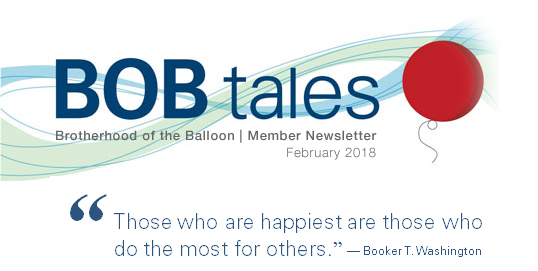
Dear Members:
We are having record cold weather here on the east coast. A half hour ago, I was standing outside a convenience store in our little seaside town of Mattapoisett, MA, ringing a bell to raise money for the Salvation Army. It was 14 degrees F. Luckily, my fingers are warming so I can type this memo.
A group of men and women in our small community volunteers to ring the bell for the Salvation Army every year. It’s a wonderful cause and we all do it willingly. I have also found that passersbys are eager to give and often make generous donations.
About five years ago, a middle-age gentleman walked up to me while I was ringing the bell and dropped in a $50 bill. As he did, he said, “I owe the Salvation Army a lot. When I was down and out, they saved me. And for that, I’ll be forever grateful. I now give back all I can.” With tears in his eyes (and mine), he walked away.
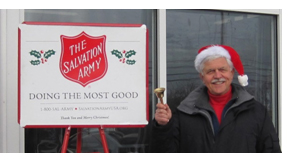 Ever since I began volunteering for this effort around eight years ago, I find it hard to walk by another bell-ringer without dropping something in the red kettle; it just feels like the right thing to do. This is one of many ways we, who have so much, can do for those who have little.
Ever since I began volunteering for this effort around eight years ago, I find it hard to walk by another bell-ringer without dropping something in the red kettle; it just feels like the right thing to do. This is one of many ways we, who have so much, can do for those who have little.
Speaking of giving, Deb and I are most impressed with the number of BOB members who contributed last year to the Robert J. Marckini Endowed Chair for proton therapy research as well LLUH’s Vision 2020 (a major initiative to transform the future of LLUH through expansion of clinical care, education, research and wholeness).
While we typically don’t know how much each member gives, we are told gifts range from a few dollars, to many thousands of dollars. Every bit helps and all gifts are sincerely appreciated. Last month we reported that two members sent in $10,000 checks. And most recently we received a $50,000 gift from an individual who asked for it to be directed to the Marckini Chair. Another member made a $5,000 gift to spina bifida research at LLUH. Some members make gifts every month. What a wonderful way to say “thank you” for the gift of proton therapy we have received.
No matter the size of the gift, Deb and I reach out and attempt to contact everyone who has made gifts in order to express our thanks and appreciation. This often leads to lengthy and enjoyable conversations where we learn about how members are doing, often many years after treatment. We typically ask if they are receiving and reading the BOB Tales. Most say they receive it and read it cover-to-cover every month, which makes us happy.
We have an interesting and comprehensive newsletter this month including news on hypo-fractionation treatment for intermediate-risk prostate cancer and some interesting news regarding testosterone and prostate cancer. New studies comparing proton therapy to IMRT for treating different tumor sites are continuing to show the superiority of proton particularly in the area of side effects and quality of life after treatment. And finally, we continue to provide educational information to help patients become more informed and take control of their health.
We were hoping to provide an update on the planning for the research project comparing proton therapy to IMRT for treating prostate cancer that is being funded by the Patient Centered Outcomes Research Institute, but that will happen in future BOB Tales. Deb and I are on the project team as patient stakeholder representatives and we have a team meeting scheduled in Florida in early February with Dr. Nancy Mendenhall (UFHPTI), the project leader. We should have more to report on this exciting and long-awaited project in our March issue. We expect to provide details on the scope of the study as well as timelines and information for patients who might be interested in becoming one of the 3,000 participants in the project.
As always, we welcome your feedback on this newsletter.
Bob Marckini.
To print the BOB Tales newsletter or view the newsletter with a larger font size, click here for the PDF file.
In This Issue:
- Low Testosterone Linked to Reduced Prostate Cancer Risk
- Hypo-Fractionated Radiation Therapy Better for Intermediate-risk Prostate Cancer?
- Proton Clinical Trials
- Can Tomato Sauce Help Prevent Prostate Cancer?
- Your Biopsy Results Might Not Actually Be Yours
- Testosterone Supplements—To Take or Not to Take
- Whole Milk Associated with Prostate Cancer Recurrence?
- Study: Extra Virgin Olive Oil and Prostate Cancer
- Incredible Invention—The Apron
.jpg)
Low Testosterone Linked to Reduced Prostate Cancer Risk
According to new research presented at the National Cancer Research Institute Cancer Conference in Liverpool, England, “Men with unusually low amounts of testosterone in their blood are around 20 percent less likely to develop prostate cancer.”
The large study involved 19,000 men aged 34-76. Over the course of 45 years, nearly 7,000 developed prostate cancer. Men with the lowest testosterone levels were significantly less likely to develop prostate cancer than the others. But, interestingly, when men in this group did develop prostate cancer, they were 65 percent more likely to develop an aggressive form of the disease compared to all other men.
Related to this subject is the issue of taking testosterone supplements after having been treated for prostate cancer. In the “Flashback” segment of this month’s BOB Tales we are re-running an important article, Testosterone Supplements—To Take or Not to Take. We encourage you to read it.
Hypo-Fractionated Radiation Therapy Better for Intermediate Risk Prostate Cancer?
We’ve reported in the past about ongoing clinical research showing excellent disease control and quality-of-life outcomes when using hypo-fractionated proton therapy to treat early stage prostate cancer.
Hypo-fractionation refers to reducing the number of treatments (fractions) while increasing the dosage per treatment. Instead of the standard 40 to 44 treatment protocol, the hypo-fractionation trials typically call for 20 to 26 treatments. Some newer studies are using as few as five treatments.
New research using conventional radiation, suggests that hypo-fractionation might even be the preferred protocol for treating intermediate-risk prostate cancer.
For this discussion, HRT refers to hypo-fractionated radiation therapy, and CRT refers to conventionally fractionated high-dose external beam radiation therapy.
Researchers at Brigham and Woman’s Hospital in Boston performed a systematic review and meta-analysis, pooling available data to determine if an improved risk of recurrence could be demonstrated using HRT vs. CRT while also evaluating the impact on bladder and rectal function. The HRT protocol was one-month duration, while the CRT was the standard two-month treatment plan.
The study was published in European Urology Focus, and concluded the following:“Our results provide evidence for clinicians to consider HRT as compared with CRT as a preferred radiation treatment in men with intermediate-risk prostate cancer and at low risk of other complications,” stated Trevor Royce, MD, MPH, radiation oncologist at Brigham and Women’s Hospital and first author of the study.
“Treatment with a shorter course of radiation and higher doses over fewer days may be the preferred approach in appropriately selected patients with localized prostate cancer, reducing treatment time and cost to the patient, and increasing patient convenience and access to treatment.”
The research involved three randomized studies involving more than 5,000 men, most of whom had intermediate-risk prostate cancer. No significant difference was found in overall survival rate between HRT and CRT, but researchers believe there could be an overall long-term survival benefit for those who had HRT. However, there did appear to be an increase in late bladder and urethra toxicities in the HRT group, which could be mitigated, researchers believe, by carefully choosing men who are not at risk for sustaining these side effects, according to Anthony D’Amico, MD, PhD, Chief of Genitourinary Radiation Oncology at Brigham and Woman’s Hospital and senor author of the study.
Previous HRT/CRT studies have also shown that the risk of recurrence may be lower with HRT- treated patients than those treated using the standard CRT protocol.
BOB Comment: Note that this research was all done with photon (X-ray) radiation. We believe that with the superior targeting ability of the proton beam, not only would disease-free survival be improved with hypo-fractionation, but genitourinary and gastrointestinal side effects could also be lower. The PCORI project should help answer these questions.
Proton Clinical Trials
The science of today is the technology of tomorrow. —Edward Teller
On a recent National Association for Proton Therapy (NAPT) conference call, we heard about several clinical trials under way involving proton therapy. Here are a few of them.
Phase II/III Randomized Clinical Trial comparing Intensity Modulated Proton Therapy (IMPT) to IMRT: Three proton centers are involved in this study and 167 patients are enrolled.
Researchers are examining progression-free survival as well as rates and severity of late grade 3-5 toxicity.
Phase IIB Randomized Clinical Trial comparing Proton Therapy to IMRT: Two proton centers are involved in this study and 125 patients are enrolled. End points being studied include progression-free survival and total toxicity burden.
Proton Therapy vs. Conventional X-ray radiation for treating Locally Advanced Breast Cancer: Eighteen proton centers are involved and 260 patients are participating. Since left breast treatment using X-rays typically results in radiation deposited on the heart, the end points being studied include cardiovascular events, disease control, cardiac toxicity, long-term survival, and quality of life after treatment.
Phase III Randomized Clinical Trial Comparing Proton to Photon (X-ray) Chemoradiotherapy for Inoperable Non-small-cell Lung Cancer: Ninety-six patients and nine proton centers are involved. End points being studied include progression-free survival and total toxicity burden.
Randomized Clinical Trial Comparing Hypofractionated IMRT or Proton Therapy to Conventional Photon with Temozolomide for Glioblastoma Multiforme: Eighty-eight patients are involved in this study. Overall survival is the primary endpoint for this study.
Phase III Trial Comparing Proton to IMRT for Low or Intermediate Risk Prostate Cancer: Seven proton centers are signed up to participate in this trial. However, no patients are enrolled yet. We have heard that it is difficult to register patients for the IMRT arm once they learn the fundamental differences between proton therapy and IMRT. Patients don’t want to be “randomized” into the IMRT arm.
Phase II Randomized Trial comparing Proton Therapy to IMRT for Cognitive Preservation in Patients with IDH Mutant, Low and Intermediate Grade Gliomas: This is a new study with no patients registered.
In all of these studies, there’s capacity for additional patient enrollment.
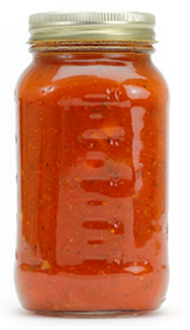 Can Tomato Sauce Help Prevent Prostate Cancer?
Can Tomato Sauce Help Prevent Prostate Cancer?
In last month’s BOB Tales we addressed the question, “Is lycopene good for you or not?”
NutritionFacts.org produced a video attempting to answer this question. In the past, researchers believed it was the lycopene component of tomatoes that was the active anti-cancer component. Yet some studies have shown this may not be the case. In fact, high doses of lycopene supplements may even increase prostate cancer risk or aggressiveness.
However, there does appear to be a strong favorable correlation between the intake of fruits and vegetables containing lycopene and the incidence of certain cancers. So, “supplementation of only one component may upset the interaction between the different antioxidants,” researchers suggested.
In addition to lycopene, there are many more carotenoids in tomatoes and tomato-based products, and there are numerous non-carotenoid compounds in tomatoes that have potentially relevant anticancer activity. The study suggests that the anticancer effects of carotenoids and other phytonutrients reside in their combined activity.
A randomized placebo-controlled study was conducted to evaluate the effect of lycopene supplements on PSA and DNA damage in men with prostate cancer. Thirty-two men with localized prostate cancer consumed three-quarters of a cup of tomato sauce each day for three weeks before their scheduled radical prostatectomy. Prostate tissue was collected before and after the three-week experiment.
During the three-week period, their PSA levels dropped an average of 17.5 percent. Also, free radical damage of the DNA in white blood cells dropped by 21 percent. So, less than a cup of tomato sauce a day reduced DNA damage by more than one-fifth. And resected tissues from tomato sauce-supplemented patients had 28 percent less free-radical damage than expected.
Researchers concluded that tomato consumption may be preferable to pure lycopene for preventing prostate cancer growth.
One gentleman who heard of this study tried to convince his wife that he should have pizza two or three times a week to keep his prostate healthy. His wife wrote to the editor of Harvard Men’s Health Watch asking if this made sense, considering the conclusions of the above study. The editor/doctor replied, “Fine, but how about a cheese-free pizza, with broccoli and instead of pepperoni? Or just drink some low-sodium tomato juice.”
Your Biopsy Results Might Not Actually Be Yours
According to John Pfeifer, MD, PhD, professor and vice chairman for clinical affairs in the pathology and immunology department at Washington University School of Medicine in St. Louis, biopsy results sometimes get mixed up. Dr. Pfeifer was recently interviewed for BottomLine Personal magazine on this subject.
A study of about 13,000 prostate biopsies found that switched or contaminated samples caused the wrong patient to be told he had cancer approximately three times in 1,000 cases. Also, three times in 1,000 cases a patient is told he does not have cancer when in fact he does. And these mix-ups are not limited to prostate biopsies.
 When mix-ups like this occur, a healthy person could be subjected to life-altering treatments such as surgery, radiation, and/or chemotherapy for someone else’s cancer diagnosis. Meanwhile, the person who actually has the cancer could be told he is fine, delaying potentially life-saving treatment.
When mix-ups like this occur, a healthy person could be subjected to life-altering treatments such as surgery, radiation, and/or chemotherapy for someone else’s cancer diagnosis. Meanwhile, the person who actually has the cancer could be told he is fine, delaying potentially life-saving treatment.
One solution to this problem is to do DNA testing to confirm that the tissue that was tested actually matches the patient. This type of testing, which costs a few hundred dollars is typically covered by medical insurance. Strand Diagnostics, for example, charges $295 for this test.
BOB Comment: We are aware of one gentleman who was told he had prostate cancer and elected surgery. After its removal, the prostate was examined and no cancer could be found. While uncommon, these mix-ups occur. This is one more reason why patients should take a pro-active role in their diagnosis and treatment decisions.
.gif)
We’ve been producing BOB Tales newsletters monthly for almost 17 years. During this time there have been important articles that many new members haven’t seen, and some older members may have forgotten. So, we’ll periodically re-run some articles from past newsletters. Since we’ve received numerous inquiries on testosterone supplements in the past few months, we’re running an article on this subject from February 2017:
Testosterone Supplements—To Take or Not to Take
A question members often ask is, “Do any members take testosterone supplements after prostate cancer treatment? And, if so, is it safe?”
In addressing this question, we must remind you that we’re not physicians and can’t give medical advice. We can tell you only what we’ve heard or read on this subject.
There seems to be differing opinions among physicians on this issue. Some say testosterone can promote prostate cancer growth and should never be taken after prostate cancer treatment. Others say, five to 10 years after treatment, men may begin taking testosterone supplements, but they should continue to monitor their PSA closely. One oncologist we spoke with supports this practice, but also suggests that men maintain testosterone levels in the lower half of the normal range.
One of our members wrote to us recently on this subject. He said he was treated 12 years ago and his PSA reached a nadir of 0.6 and stayed there for several years. Last year, as a result of a physical, he learned that he had some bone loss. His urologist recommended a testosterone supplement. Two months later his PSA rose to 0.9 ng/mL. And at four months it was 1.2 (double his nadir). He stopped the testosterone and his PSA came back down.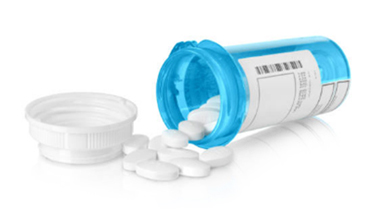
We spoke with an oncologist about this and he wasn’t surprised with the outcome. This particular doctor is opposed to taking testosterone after prostate cancer treatment.
Bottom line: The jury is out on whether or not it’s safe to take testosterone supplements after prostate cancer treatment. It might make sense, however, to fail on the safe side and avoid testosterone supplements.
We encourage you to talk with both your urologist and your oncologist if you are considering taking testosterone supplements.

In Your Own Words: Member Feedback
We received dozens of email messages last month referencing Deb Hickey’s introductory memo in the last newsletter. We were touched by all of them and decided to share a few with you below.
After reading the latest BOB Tales and seeing the picture of you and your dad, I am 100 percent positive he is as proud of you as you are of him—what a fantastic and beautiful pair you two make. The smiles on your faces are contagious, as I am smiling looking at a loving father and daughter.
It seems impossible that it has been 17 years since my proton therapy at Loma Linda. I remember “the best vacation in my life” as though it were yesterday. I attempt to maintain the same positive attitude I gained shortly after arriving at LLUCC in 2000.
I recently had my physical and my PSA is still low … I thank the good Lord every day for his blessings … Thanks for a fantastic job with the newsletter. I look forward to reading it all the time.
—Ron Yedloutschnig, Southold, NY
Deb: Thanks so much for your tribute to your Dad in the Dec/Jan issue of BOB Tales. I can relate to your appreciation for him, because I also had a wonderful father. When he retired, he was a vice president at the Seventh-day Adventist church world headquarters. For many years he was on the Loma Linda University Board and was instrumental in consolidating the University schools on the Loma Linda campus. He passed away in 1993 and I still miss his advice and counsel. Largely because of his inspiration, I devoted over 40 years of my life to God’s service as an employee of the Adventist Church. I am so thankful that I had a father like him, and happy that you recognize the influence of your father on your life. Those of us who have benefited from the proton therapy at LLUCC are also very thankful for the contributions you and your father make. Merry Christmas and may God continue to bless you in your service for mankind (and womankind) during the coming year.
—Arlind Hacket, Highland, CA
Your very special Dad is a truly great man because he is a truly good Christian human being. You have a right to be proud of him just as he is proud of you. Keep on keepin' on—the program is truly a “ministry.”
—Warren L. Johns, Banning, CA

As Bob Marckini mentioned in the opening memo, we were overwhelmed with the number of members (and others) who made contributions to proton research and to LLUH’s Vision 2020 in 2017. Your contributions are helping researchers who are studying new applications for the proton beam as well as physicians and scientists who are conducting clinical studies to determine better ways to use proton therapy to benefit more patients. Your gifts allow doctors to use proton technology to treat new cancer sites and new medical conditions. No matter the amount, you truly have and continue to make a difference.
If you are interested in giving back, please review the instructions below.
How to Give to Proton Therapy Research
- Donate Online: Visit the LLUCC website.
- Send a Check: Make it out to “LLUCC Proton” with “Marckini Chair” on the memo line and send to: LLUH, Office of Philanthropy, P.O. Box 2000, Loma Linda, CA 92354.
- Make a Call: Contact Elvia DeHaro at 909-558-501
How to Give to Vision 2020
- Donate online: Visit the LLUH website.
- Send a check: Make it out to: “LLUH Vision 2020.” Mail to: LLUH, Office of Philanthropy, P.O. Box 2000, Loma Linda, CA 92354.
- Make a call: Call 909-651-2020.
How to Make a Future Gift
- Make a future gift: Contact Todd Mekelburg at the Office of Planned Giving at Loma Linda University Health at 909-558-5376 or [email protected].
- Other ways to give: Contact Matt Miller at the Office of Philanthropy at Loma Linda University Health at 909-558-3582 or [email protected].


NAPT 2018
The National Association for Proton Therapy (NAPT) is the voice of the proton therapy community—providing education and awareness for the public, professional and governmental stakeholders about the benefits of proton therapy for treating cancer.
Join the NAPT for the sixth annual National Proton Conference, March 25 – 28, 2018, at the Scottsdale Resort at McCormick Ranch in Scottsdale, AZ. Proton therapy physicians, physicists and administrators from around the world will be in attendance. An exhibition hall will showcase proton-related technologies. And the program will cover a variety of interesting subjects relating to new proton technologies, insurance coverage, design and evolution of new proton centers, and other timely topics.

Whole Milk Associated with Prostate Cancer Recurrence?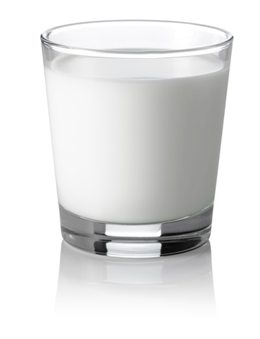
Drinking whole milk on a regular basis is a no-go for men with prostate cancer, advise the authors of a new study. After studying 1,334 men with non-metastatic disease for eight years, researchers found that men who regulary drank milk had an 80 percent increased risk for recurrence compared with infrequent drinkers. They said overweight milk drinkers had an even higher risk of recurrence.
An expert not involved in the study disagrees with the authors’ conclusion about milk, citing insufficient evidence. However, the best-selling new book, How Not to Die, identifies milk and other dairy produces as foods that help promote prostate cancer growth.
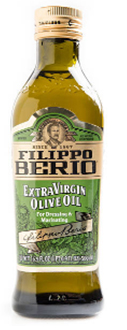 Study: Extra Virgin Olive Oil and Prostate Cancer
Study: Extra Virgin Olive Oil and Prostate Cancer
New research shows extra virgin olive oil, a poweful cancer-fighting antioxidant, has added benefits for those with weight issues. Mary Flynn, PhD, chief research dietitian at The Miriam Hospital in Providence, RI, tested men with low-risk prostate cancer who were prescribed weight loss. The study compared two diets: A diet from the Prostate Cancer Foundation and Flynn’s diet. Both included a daily intake of olive oil and vegetables, but Flynn’s diet included less meat and other animal products. It also included extra virgin olive oil as opposed to regular olive oil.
“Carotenoids need fat to be absorbed,” says Flynn, “Specifically, extra virgin olive oil.”
The 18 men in Flynn’s study ate her diet for eight weeks before switching to the other diet. The weight loss for both diets was the same, but on Flynn’s diet, participants’ blood sugar levels decreased. “…They had a lowering of their insulin and glucose, and then this measurement that looks at how much insulin you need to keep your glucose low, so those were all good things as far as cancer risk,” said Flynn.
What to Sip When You’re Sick
We’ve all heard that we should drink plenty of fluids when we’re sick, but what kinds of fluids? Cook’n suggests:
- Herbal Tea: Nettle for cleansing; hibiscus for vitamins; and almost any other herbal tea.
- Orange Juice: Fresh orange juice has lots of vitamin C and many other vitamins and natural sugars.
- Elderberry Juice: This fluid can inhibit the growth of the influenza virus, reduce sinus congestion, and shorten the duration of the flu.
- Real Ginger Ale/Ginger Tea: Fresh ginger helps fight off respiratory viruses and sooths your stomach. Fresh ginger slices in hot water make a nice ginger tea. Serve with raw honey for near immediate relief.
- Hot Water with Lemon and Honey: Raw honey has excellent medicinal properties. Lemon is vitamin rich and helps alkalize and cleanse the body.
- Broth: Chicken broth, bone broth, and vegetable broth all have beneficial medicinal properties and help fight off inflammation.
- Water: Helps fight off dehydration.
Loneliness Can Kill
Did you know loneliness can pose a major threat to your health? A former U.S. Surgeon General said it can “kill as fast as 15 cigarettes a day!” This is an even greater threat to men than to women, and social isolation can increase risk for a number of diseases, including heart disease and cancer.
In next month’s BOB Tales, we’ll be doing a review of this topic. Stay tuned.
Super Foods for Better Health
Below is a list of super foods for better health issued by the Nutrition Action Healthletter.
- Sweet Potatoes are loaded with carotenoids and they’re a good source of potassium and fiber.
- Mangoes: You get 100 percent of a day’s vitamin C, one-third vitamin A, a good dose of potassium, and 3 grams of fiber from one cup of mangos.
- Plain Greek Yogurt: Fat-free Greek yogurt has twice the protein of ordinary yogurt.
- Broccoli: All cruciferous veggies help fight prostate cancer. This veggie is loaded with vitamin C, carotenoids, vitamin K, and folate.
- Oatmeal: Each half-cup of plain rolled oats has 4 grams of fiber, which helps to lower cholesterol.
- Garbanzo Beans: All beans are healthful, rich in protein, fiber, copper, folate, iron, magnesium, potassium, and zinc. Garbanzos are versatile—choose no-salt varieties and add to salads, stews, and soups.
- Watermelon is loaded with vitamin A, C, potassium, and lycopene.
- Butternut Squash contains lots of vitamin A, C, and fiber. It’s great steamed, stir-fried, or in soups.
- Leafy Greens including kale, collards, spinach, mustard greens, and Swiss chard are loaded with vitamins A, C, K, folate, potassium, magnesium, calcium, iron, and fiber.
Series: “Make Vegetables Taste Good”
This is the 16th segment on a subject that’s consistent with our Anticancer series. We made it our mission to find recipes that make the most healthful vegetables taste delicious. And, we’ve tried them all!
Carrot and Black Bean Tacos
Deb is constantly hunting down vegetarian and vegan recipes online and in cookbooks. She found this one online and made it for dinner last night—delicious.
Ingredients:
|
|
Directions: Preheat oven to 450 degrees F. Heat 1 ½ tablespoons oil in a medium saucepan over medium-high heat. Add onion and pepper and cook, stirring occasionally, until tender, 4 to 6 minutes. Add chili powder and cook, stirring, until fragrant, about 30 seconds. Add black beans and 1/3 cup water. Reduce heat to medium-low and cook, stirring occasionally, until thickened, 4 to 6 minutes. Mash beans with the back of the spoon until thick. Stir in lime juice. Season with salt and pepper.
Meanwhile, toss carrots with cumin and 1 ½ tablespoons oil on a rimmed baking sheet. Season with salt and pepper. Roast, turning once, until just tender, 10 to 12 minutes.
Divide beans and carrots between taco shells. Top with avocado, queso fresco (or feta), cilantro, and radishes. Serve with lime wedges alongside.

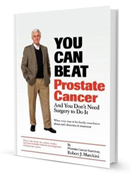
Amazon Reviews Carry Weight
The Amazon search engine operates on certain algorithms—the more reviews, the more visibility. Please help us reach 400 Amazon reviews in 2018! If Bob’s book, You Can Beat Prostate Cancer, was helpful to you, please post a review. Click on the gray “Write a Review” button.
Bob’s book still shows up in the No. 3 position on a search for “prostate cancer”—but the competition is mounting. Newly diagnosed men need to know that surgery and traditional radiation are not the only treatment options. They need to learn to be their own advocate; do their own homework; and make the best treatment decision for themselves. Please help us keep the book easily accessible to newly daignosed men and their family members. Thank you!
The first review of the New Year is below.

This book is a must read for all males. It seems we males, sooner or later, will get prostate cancer or have a friend who has prostate cancer. This book is very precise and understandable as it details the options for treating the disease. It also takes you through the journey Mr. Robert Marckini chose—proton treatment. The book, in a very clear way, lets you know there are ways to treat prostate cancer that are not evasive. —RVE
If you found Bob’s book helpful in your journey to proton therapy, please help others find it by posting a review on Amazon. Click on the “Write a Review” button.
Buy Online, in Bulk or in Spanish
Online: Paperback: $19.00--•--Kindle: $7.99--•--NOOK Book: $9.99--•--Apple iBook: $9.99
In Bulk: Conctact us for a discount price list. Proceeds from book sales support proton therapy research through the Robert J. Marckini Endowed Chair at LLUCC.
In Spanish: Buy the print version or in eBook format.

Baby, It’s Cold Outside …
At the time of this writing, it’s 7º F just west of Boston where Deb lives (2º warmer where Bob lives). But, we aren’t complaining—according to USA Today, the five coldest cities in the U.S. are Duluth, MN with an average low of 1.5º F; Williston, ND with an average low of 0.1º F; Fargo, ND also 0.1º F; Grand Forks, ND with a -3.1º F average; and winning the prize is Fairbanks, AK with average lows dipping to -16.9º F.
Social Security Benefits—Good News and Bad News
According to The Wall Street Journal, Social Security benefits will rise 2 percent in 2018. But the increase will be eaten up by Medicare costs. Average benefits are expected to increase by about $27/month with Medicare costs projected to rise by about $25/month.
Did You Know?
- More people live in New York City than in 40 of the 50 states.
- The word “Pennsylvania” is misspelled on the Liberty Bell.
- There is enough water in Lake Superior to cover all of North and South America in one foot of liquid.
- There’s a town in Washington with treetop bridges made specifically to help squirrels cross the street.
- In 1872, Russia sold Alaska to the Unites States for about two cents per acre.
- It would take you more than 400 years to spend a night in all of Las Vegas’ hotel rooms.

Last Month’s Brain Teaser
These words follow a rule: beech, fir, pear, plum
These words don’t follow the rule: birch, cherry, elm, palm
What is the rule?
Answer: Each word in the first set has a homophone–an unrelated word that sounds the same (beach, fur, pair or pare and plumb). The second set does not.
Winner: Don Coban of Rapid City, SD is the winner of last month’s brain teaser! Don is a former Air Force navigator. Over the course of 38 years, he traveled around the world flying “32 different types of aircraft.” His wife, Virginia (Jinny), of almost 60 years, stayed home and “manned the home fires.”
In the spring of 2002, Don “decided to start traveling on ground” and he and Jinny purchased a motorcoach. Shortly thereafter, just before his 69th birthday in August 2002, Don was diagnosed with prostate cancer.
“Immediately the panic set in,” Don said. “Doctors were suggesting surgery, seeds, or perhaps watchful waiting, but I didn’t like any of those choices.” Don began researching alternative treatment options and learned about proton therapy. He spoke with a former proton therapy patient who had been treated at Loma Linda University Cancer Center in California. The two talked for a long time. When Don hung up, he called LLUCC to discuss the treatment further. “Those two conversations convinced me that proton therapy was the way to go,” Don said.
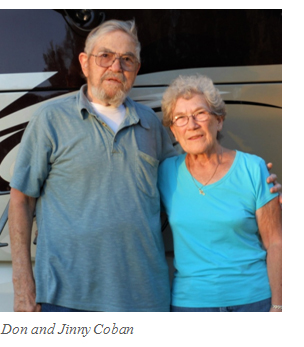 The day after Christmas, Don and Jinny headed to California in their coach. They stayed at an RV park close to the hospital. “The only way to describe our stay while I went through treatment is that it was like a vacation,” Don said. “We were up early in the morning for treatment and then off and running—to the beach, the mountains, exploring … whatever.”
The day after Christmas, Don and Jinny headed to California in their coach. They stayed at an RV park close to the hospital. “The only way to describe our stay while I went through treatment is that it was like a vacation,” Don said. “We were up early in the morning for treatment and then off and running—to the beach, the mountains, exploring … whatever.”
A year after his treatment ended, Don and Jinny returned to Loma Linda for his yearly check-up. “Everything was good,” Don said. “We left and continued our adventure. My result to this day, almost 15 years later—my PSA remains low and I feel fine.” Don and Jinny still enjoy traveling; they spend about 9 months of the year in their motorcoach.
New Brain Teaser
Three towns are located at the corners A, B and C of a triangle with equal sides. A car travels at constant speed from A to B at 30 mph, from B to C at 40 mph and from C back to A at 60 mph.
What is the average speed of the round trip?
Too easy? Think again.
Send your answer to [email protected] for a chance to win a signed copy of Bob Marckini’s book, You Can Beat Prostate Cancer.
Don’t Go There
I have been in many places, but I’ve never been in Cahoots. Apparently, you can't go alone. You have to be in Cahoots with someone.
I’ve also never been in Cognito. I hear no one recognizes you there.
I have, however, been in Sane. They don’t have an airport; you have to be driven there. I have made several trips there, thanks to my children, friends, family, work, and politics.
I would like to go to Conclusions, but you have to jump, and I’m not too much on physical activity anymore.
I have also been in Doubt. That is a sad place to go, and I try not to visit there too often.
I’ve been in Flexible, but only when it was very important to stand firm.
Sometimes I’m in Capable. I go there more often as I get older.
One of my favorite places to be is in Suspense! It really gets the adrenaline flowing and pumps up the old heart. At my age, I need all the stimuli I can get.
I may have been in Continent, but I don’t remember what country that was in. It’s an age thing. They tell me it is very wet and damp there.
As I get older …
- I talk to myself, because there are times I need expert advice.
- I consider “on trend” to be the clothes that still fit.
- The biggest lie I tell myself is, “I don’t need to write that down; I’ll remember it.”
- These days, “on time” is when I get there.
- Lately, I’ve noticed people my age are so much older than I.
- When I was a child, I thought nap time was punishment. Now it feels like a vacation.
- I thought growing old would take longer.
- Aging has slowed me down, but it hasn’t shut me up.
- Wouldn’t it be wonderful if we could put ourselves in the dryer for 10 minutes, then come out wrinkle-free and two sizes smaller?
Remember: Youth is a gift of nature. Age is a work of art.
Quote of the Month:
“Anger is an acid that can do more harm to the vessel in which it is stored than to anything on which it is poured.” —Mark Twain

Incredible Invention: The Apron
I don’t think our kids know what an apron is. The principal use of Grandma’s apron was to protect the dress underneath because she had only a few. It was also because it was easier to wash aprons than dresses and aprons used less material. But along with that, it served as a potholder for removing pans from the oven.
It was wonderful for drying children’s tears, and on occasion was even used for cleaning out dirty ears. From the chicken coop, the apron was used for carrying eggs, fussy chicks, and sometimes half-hatched eggs to be finished in the warming oven.
When company came, the apron was an ideal hiding place for shy kids. And when the weather was cold, Grandma wrapped it around her arms.
That big old apron wiped many a perspiring brow, bent over the hot wood stove. Chips and firewood were brought into the kitchen in that apron.
From the garden, it carried all sorts of vegetables. After the peas had been shelled, it carried out the hulls. In the autumn, the apron was used to bring in apples that had fallen from the trees.
When unexpected company drove up the road, it was surprising how much furniture that old apron could dust in a matter of seconds.
When dinner was ready, Grandma walked out onto the porch, waved her apron, and the men folk knew it was time to come in from the fields to dinner.
It will be a long time before someone invents something that will replace that “old-time apron” that served so many purposes.
Germaphobes would go crazy today trying to figure out how many germs were on that thing.
I don’t think I ever caught anything from an apron but love.
Low PSAs to all!
Bob Marckini and Deb Hickey
To print the BOB Tales newsletter or view the newsletter with a larger font size, click here for the PDF file.
NO MEDICAL ADVICE: Material appearing here represents opinions offered by non-medically-trained laypersons. Comments shown here should NEVER be interpreted as specific medical advice and must be used only as background information when consulting with a qualified medical professional.
